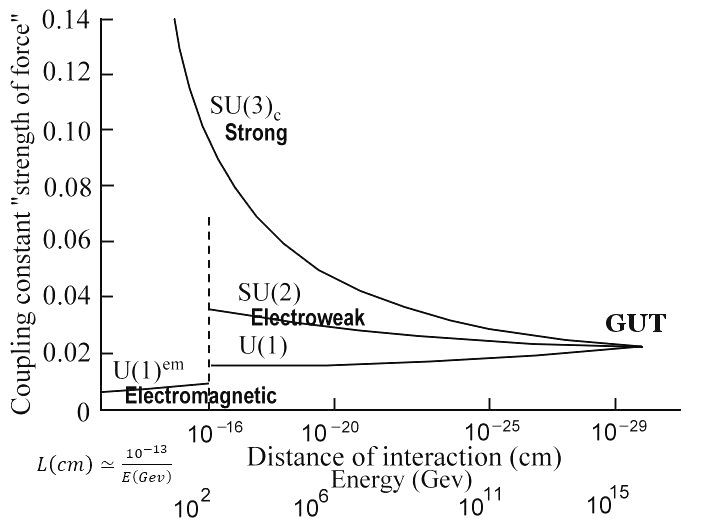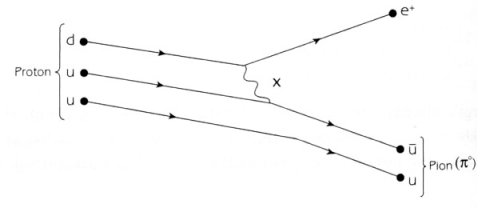

| Home Page | Overview | Site Map | Index | Appendix | Illustration | About | Contact | Update | FAQ |
Although the Standard Model has been very successful in accounting for all experimental phenomena, it is not expected to be the ultimate theory because of its great complexity and the many questions it leaves unanswered. These objections seem to suggest that there may be deeper symmetries underlying the standard model, leading perhaps to the unification of the strong and electroweak interactions into a single "Grand Unified theory", or GUT. Such scheme is indeed possible if the internal rotation group is further generalized to SU(5).
 |
 |
Similar to the symmetry group of sphere that contains circles as its subgroups, the SU(5) group includes the subgroup SU(3) X SU(2) X U(1). In SU(5) all the elementary particles can be assigned into two 5-multiplets and two 10-multiplets. Figure 15-10a shows one of the 5-multiplets with the 24 gauge bosons assignment arranged into a matrix. Of these, 12 are familiar (the photon, W+, W-, Z0 and 8 gluons). The remaining 12 are new bosons denoted by X; these carry new forces which can transform quarks into leptons and vice versa. The mass of the X bosons have been calculated under the Higgs mechanism, and turns out to be about 1015 Gev. These super-heavy particles lie many orders of magnitude beyond the energy ranges of any conceivable accelerator. However, they would be present in great abundance in the first 10-35 sec after the Big Bang. |
Figure 15-10a SU(5) Symmetry [view large image] |
Figure 15-10b Grand Unified Theory [view large image] |
 |
Figure 15-10b. The most dramatic consequence of grand unification is that the proton is no longer stable, it has a small probability for decay into neutral pion and a positron (with a half life of about 1032 years) as shown in Figure 15-11. No such decay has been detected so far. Thus after almost 20 years of futile attempts to detect proton decay, physicists now agree that the SU(5) GUT model can be ruled out, but the SO(10) model remains possible, it predicts a longer lifetime. SO(10) is a slightly larger symmetry group with 16-component multiplet. In SO(10) we can create a theory with left-right symmetry including a right-handed neutrino and introduce an "ultra-Higgs" particle |
Figure 15-11 Proton Decay |
in such a way that spontaneous symmetry breaking happens twice - first, the underlying left-right symmetric theory breaks down to SU(3) X SU(2) X U(1), and then a second symmetry breaking happens, exactly as in the basic Standard Model. |